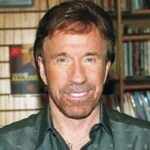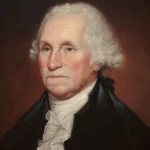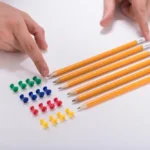
Despite going on to secure worldwide fame as an inventor extraordinaire, Edison was a school dropout. He had trouble concentrating due to his inquisitive mind, leading to his teachers thinking there was something wrong with him.
Edison’s most famous inventions are the phonograph and the paradigm-shifting design of the electric light bulb. Contrary to popular misconception, Edison didn’t ‘invent’ the electric bulb; several designs had been made to that effect before Edison. Edison’s design, however, stood out due to it being the most practical and the most efficient.
His first inventions included an electric vote recorder and a stock ticker.
When Edison was nine years old, he received a book on physics. Even at that tender age, he did not believe all the experiments in the book until he had tested them himself. He used the basement of his house to carry out all the experiments. Later, he constructed a makeshift lab in a train carriage.
Thomas Edison was partially deaf. At least three separate reasons for the deafness have been presented: that a train conductor slapped him hard across the face when a chemical reaction in his ‘train lab’ caused a fire, that he was pulled by the ear into a moving train by a conductor, and a bout of scarlet fever and recurring ear infections. Though his hearing was impaired from the age of 12, he said that it did not bother him, since it helped him concentrate.
He invented the Edison battery, which made use of an alkaline electrolyte.
At the age of 14, he saved a 3 year old boy — Jimmie MacKenzie — from being hit by a train. The father of the child (who was a station agent) was so grateful that he trained Thomas Edison to be a telegraph operator. This channeled Edison’s genius towards the field of telegraph, and he produced several innovations in the field.
The most popular of his inventions concerning the improvement of telegraph machines was the automatic repeater and the electric telegraph machine.
He set up the world’s first electric light power station in Lower Manhattan.
With the invention of the phonograph in 1877, he acquired fame as The Wizard of Menlo Park.
He formed the Edison Electric Light Company in 1878 in New York City. This was done with the help of several other financiers.
He is also known as the first inventor to use the principles of mass production for inventions.
He considered William J. Hammer as the pioneer of incandescent electric lighting. William J. Hammer was a consulting electrical engineer who assisted Edison in December 1879. He helped Edison with various experiments (phonograph, electric railway, telephone, electric lighting, etc), but primarily looked after the research on incandescent light bulbs.
It has also been said that he tested about 6,000 vegetable growths. This was for the purpose of filaments to be used in his light bulbs.
His mentor was Franklin Leonard Pope. He allowed Edison to live and experiment in his home in New Jersey.
He also invented the carbon microphone between the period 1877-1878. This was used in all the telephones of the period.
He was one of the pioneering researchers in the field of motion cameras and made one of the first designs for the same.
Edison invented the forerunner of the modern tattoo machine!
Despite his numerous brilliant inventions and innovations, several of his ideas were absolute duds. One of these was the idea of building houses that had everything molded from concrete — right from the walls to the bathtubs. He set out to launch this project as a solution to the housing problems in New York by making them an affordable option for the common man. However, the idea failed and not a single house was sold from among the 11 concrete houses that were built. Edison also went on to build other concrete items, like pianos and cupboards. Unsurprisingly, they, too, found no buyers.
Edison married his first wife Mary Stilwell at the age of 24. She was his employee. They had 3 children together. After Mary died, Edison married Mina Miller. An interesting fact about his marriage proposal to Miller was that he proposed using Morse code.
Edison’s untiring work was rewarded in the shape of the Congressional Gold Medal in 1928.
Thomas Edison died on October 18, 1931, due to complications arising from diabetes. He was outlived by his wife by 16 years.
Edison was raised a Christian, but his scientific, rational mind didn’t agree with the numerous illustrations of unnatural concepts, such as miracles and rebirth. Due to this, he considered himself a Deist. He viewed Nature — rather than any specific deity described by any religion — as the ultimate power in the universe.
Postmortem, Edison was inducted in the New Jersey Hall of Fame, the Entrepreneur Walk of Fame, and received a Technical Grammy Award.
Thomas Edison was famous for the following words, ‘Genius is one percent inspiration, 99 percent perspiration’. It shows Edison’s dedication towards his work.
Frequently Asked Questions about Thomas Edison:
What 3 things did Thomas Edison invent?
While Edison invented far more than three things, some of his most significant inventions include:
- The Incandescent Light Bulb:
- Edison didn’t invent the very first light bulb, but he did invent the first commercially viable incandescent light bulb. He and his team worked tirelessly to find a filament that would burn reliably and for a long duration. His work included countless experiments with various materials.
- He also created the whole system needed for the use of the electric light, including the electrical grid.
- The Phonograph:
- This invention revolutionized sound recording and playback. It was one of Edison’s most original and groundbreaking creations.
- It was the first machine that could record and replay sound.
- The Kinetoscope:
- This was an early motion picture viewing device. It played a crucial role in the development of the film industry.
- It allowed people to watch moving pictures.
It is important to remember that Edison had over 1,000 patents, so he invented many, many other things.
Who tried 999 times?
- This refers to Thomas Edison’s persistent efforts in developing the incandescent light bulb. He famously stated that he didn’t fail 999 times, but rather found 999 ways not to create a light bulb. This highlights his dedication and perseverance.
What is Thomas Edison famous for saying?
- One of his most famous quotes is: “I have not failed. I’ve just found 10,000 ways that won’t work.”
- Another very famous quote is “Genius is one percent inspiration and ninety-nine percent perspiration.”
- These quotes exemplify his belief in hard work and persistence.
What is Thomas best known for?
- Thomas Edison is best known for his role in developing and commercializing the incandescent light bulb and for his many other influential inventions.
- He is also known for the creation of the modern research laboratory. He created a system of inventing, that is still in use today.
- His impact on the development of electricity, sound recording, and motion pictures has made him one of the most famous and influential inventors in history.








